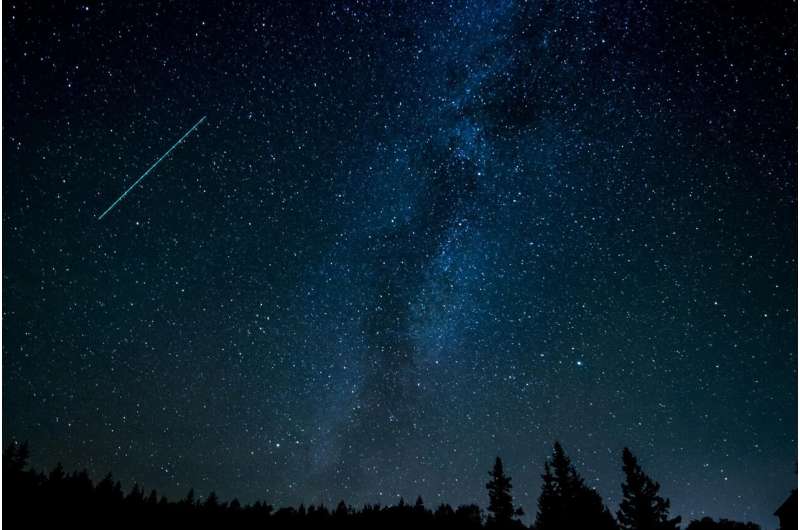
Credit: Neale LaSalle from Pexels
For years, astronomers have been on the hunt for the first generation of stars, primordial relics of the early universe. And now they may have just found them. Ari Visbal from the University of Toledo, Ohio and colleagues believe they’ve glimpsed so-called Population III (Pop III) stars following a detailed analysis of previous James Webb Space Telescope (JWST) observations of a distant galaxy called LAP1-B.
Pop III stars are thought to be composed entirely of helium and hydrogen with trace amounts of lithium, the ingredients left over after the Big Bang. They formed early on, around 200 million years after the universe began. These stars are extremely rare because they died out long ago, although scientists have hoped that the faint light from these distant, ancient objects would be detectable.
Previous Population III candidates have been ruled out because they didn’t meet the three main predictions about their formation and properties. That is, they were formed in small dark-matter clumps (called halos), were extremely massive, and formed in small clusters.
A perfect match for predictions?
In their paper published in The Astrophysical Journal Letters, the team believes their discovery satisfies all three requirements. First, the Pop III stellar system formed in the exact environment scientists predicted, namely, a dark matter clump around 50 million times the sun’s mass.
Another reason is that the stars are massive, ranging from 10 to 1,000 times the mass of our sun. These huge stars clustered together, but only in small groups totaling a few thousand solar masses, confirming the third prediction.
“LAP1-B is the first Pop III candidate to agree with three key theoretical predictions for classical Pop III sources,” wrote the researchers.
Further evidence comes from the gas surrounding LAP1-B, which shows distinct spectral signatures and contains only trace amounts of metals. This is consistent with a scenario where the system is so young that some of the first massive stars had recently died out, exploding as supernovae and polluting the gas with these early elements.
Next steps
While this research is undoubtedly exciting, it is not yet full confirmation of the discovery of Pop III stars. Some uncertainties remain, such as exactly how much material the first supernovae ejected and whether current computer models capture the physics of the early universe.
But while we’re waiting for that confirmation, this new study can provide a roadmap for finding other distant objects, such as combining the power of JWST with techniques like gravitational lensing. This approach, which enabled the detection of LAP1-B, means this discovery could be just the beginning.
“LAP1-B may only represent the tip of the iceberg in terms of the study of Pop III stars with gravitational lensing from galaxy clusters,” the team added.
Written for you by our author Paul Arnold, edited by Gaby Clark, and fact-checked and reviewed by Robert Egan—this article is the result of careful human work. We rely on readers like you to keep independent science journalism alive.
If this reporting matters to you,
please consider a donation (especially monthly).
You’ll get an ad-free account as a thank-you.
More information:
Eli Visbal et al, LAP1-B is the First Observed System Consistent with Theoretical Predictions for Population III Stars, The Astrophysical Journal Letters (2025). DOI: 10.3847/2041-8213/ae122f
© 2025 Science X Network
Citation:
Astronomers may have found the first stars that formed after the Big Bang (2025, November 4)
retrieved 5 November 2025
from https://phys.org/news/2025-11-astronomers-stars-big.html
This document is subject to copyright. Apart from any fair dealing for the purpose of private study or research, no
part may be reproduced without the written permission. The content is provided for information purposes only.

